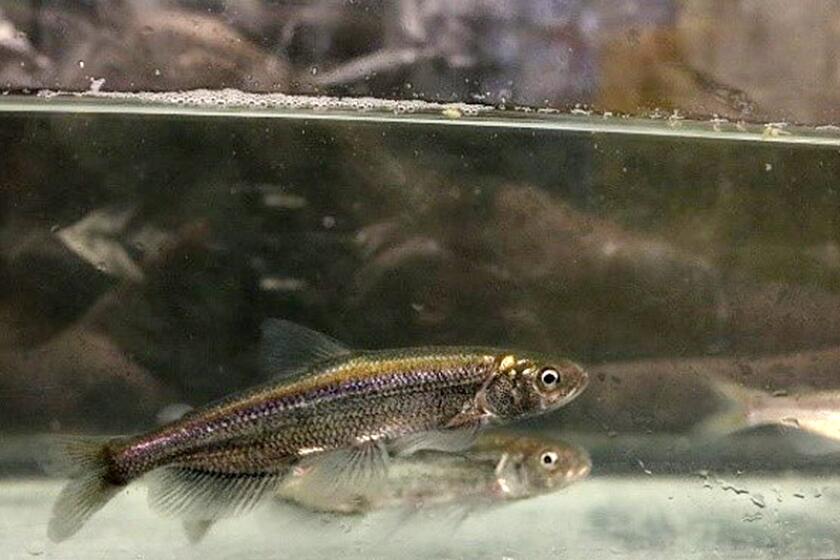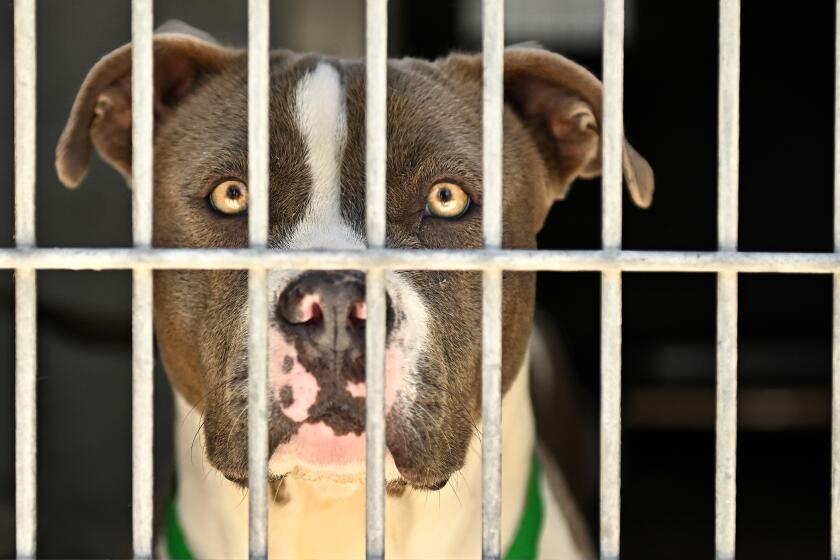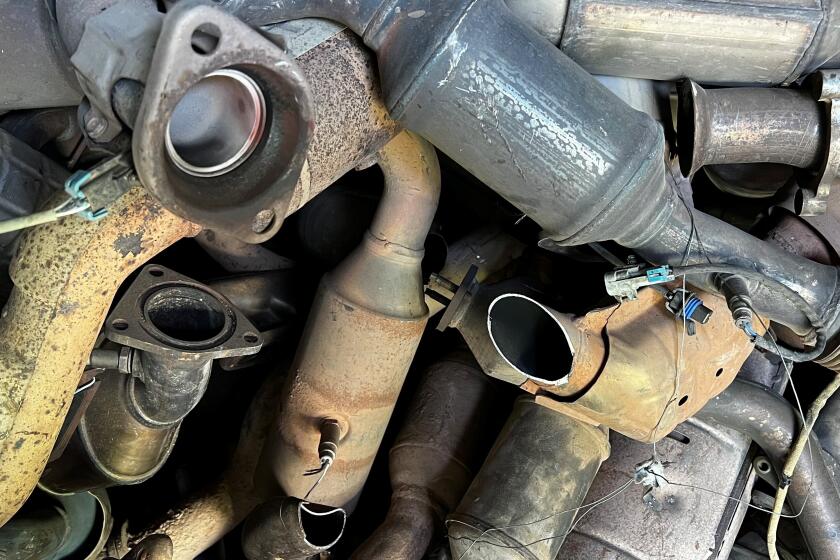Dens of Inequity : Plant Workers Want Foxes to Get a Fair Chance at Survival
- Share via
The red fox was no more than 3 weeks old when mechanics at the Hyperion sewage treatment plant saw it wandering on their property near El Segundo. It was disoriented and so tiny that it could barely open its eyes.
For nearly a week after that May day, the fox, a female, lived in a cardboard box in the Hyperion ocean-monitoring laboratory, amid racks of test tubes and a crowd of biologists who cooed at it and fed it every three hours like doting new parents.
They named the fox “Dozer,” after the bulldozers that they believe claimed its home.
Dozer now resides at the Los Angeles Zoo, where she is growing up with two Labrador retrievers that are used in educational shows, as is the fox. Dozer is friendly and likes people, said animal keeper Gail Laule, who noted that “she would not have survived” had she not been discovered.
Now, some employees at Hyperion are worried about Dozer’s cousins--foxes that have lived for years in the hillside shrubbery on the eastern edge of the 144-acre plant site. The hills are being cleared to expand the sewage plant, under orders from the U.S. Environmental Protection Agency.
“It’s a shame,” said electrician Tony Okolski, who is among a group of employees who leave food for the foxes. “Their life has been disrupted to a point where a lot of the dens are completely covered by bulldozers. . . . There is no respect for whatever is living in those bushes.”
Plant officials are concerned that the foxes’ dens are being torn up, said Hyperion spokeswoman MaryAnne Pierson. After Okolski complained, she said, Hyperion officials asked Los Angeles animal control authorities to trap and relocate the animals.
The city did set up traps about a month ago, but no foxes were caught and the effort was abandoned after about two weeks, according to Louis Dedeaux, wildlife specialist for the Los Angeles Animal Care and Control Division. He said it may have failed because the foxes were attracted to food set out by employees, rather than bait in the cages.
Dedeaux said he received a second phone call from Hyperion officials a week ago, after some workers spotted an adult fox and two kits. “If they want to trap them,” he said, “I’ll be happy to help them.”
But Dedeaux said any relocation program would depend on the type of foxes trapped.
Dozer is a red fox, but officials believe that there are also gray foxes in the Hyperion hills. The gray fox is indigenous to Southern California, while the red fox is not.
Groups of red foxes--which were reportedly first brought to Los Angeles County by fox hunters seeking their favorite variety of prey--periodically are spotted in the area, including recent sightings at the Torrance Airport and nearby Madrona Marsh.
Wildlife specialists normally would release gray foxes back into the wild, but would be reluctant to do the same with the red variety because they sometimes drive away the native grays.
If the foxes are red, Dedeaux said, he would recommend they be donated to zoos.
Whatever they are, the Hyperion foxes have been a fixture at the sewage plant at least since Okolski began work there 14 years ago.
Okolski and others regularly leave pet food for the foxes; on occasion, he said, his wife bakes them chicken to “give them a little break.” And once, he and other Hyperion employees collected money to take an injured fox to a veterinarian.
But Okolski, 60, former owner of an avocado grove, resists taking credit for pressing authorities to look into the foxes’ plight. He says other employees have been just as concerned but are reluctant to speak out, fearing they would be branded as troublemakers. He said he simply grew tired of seeing nature destroyed in the name of progress and profit.
Progress has “to take a little loss,” he said. “And you share it with God’s little creatures.”
More to Read
Sign up for Essential California
The most important California stories and recommendations in your inbox every morning.
You may occasionally receive promotional content from the Los Angeles Times.










